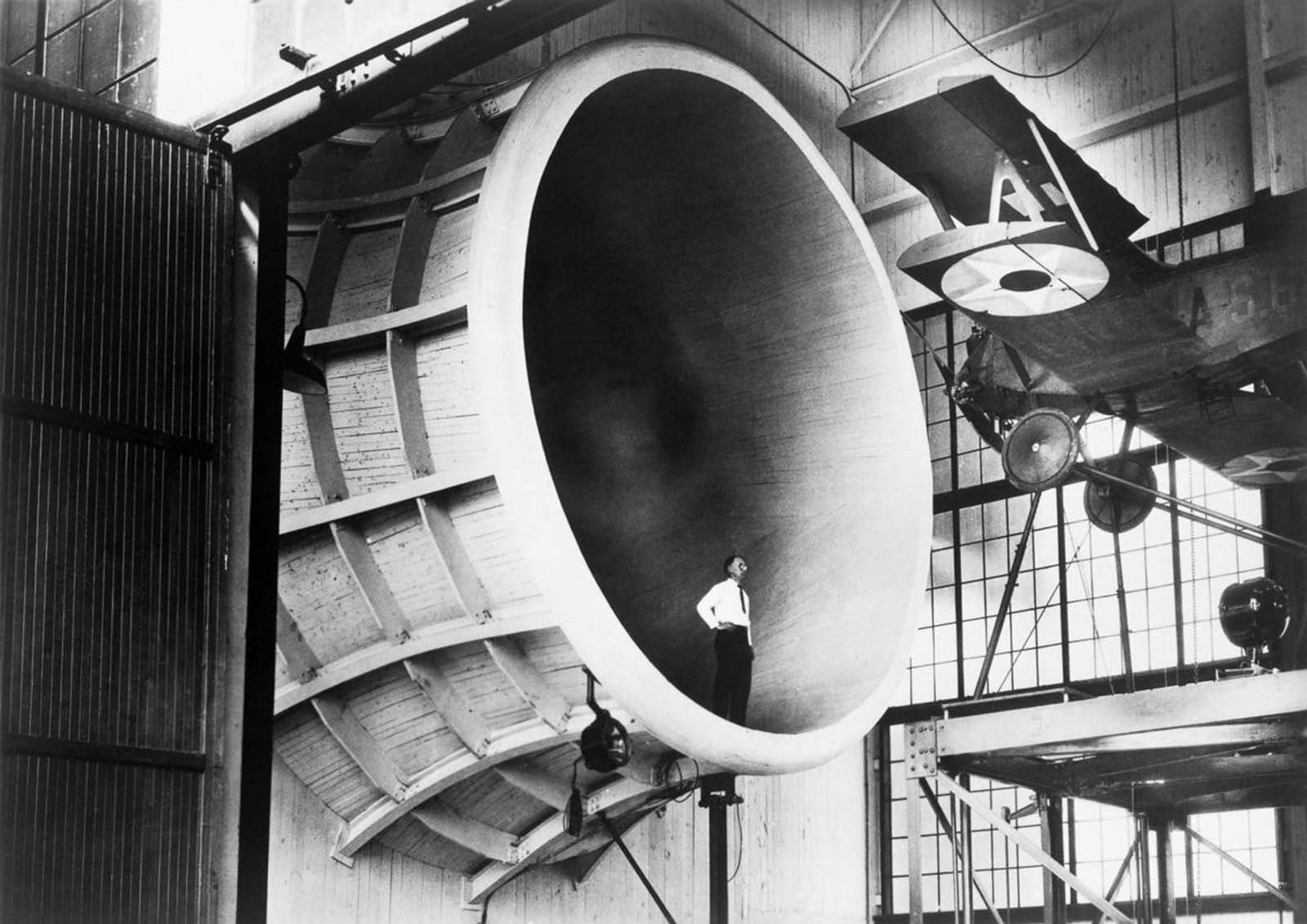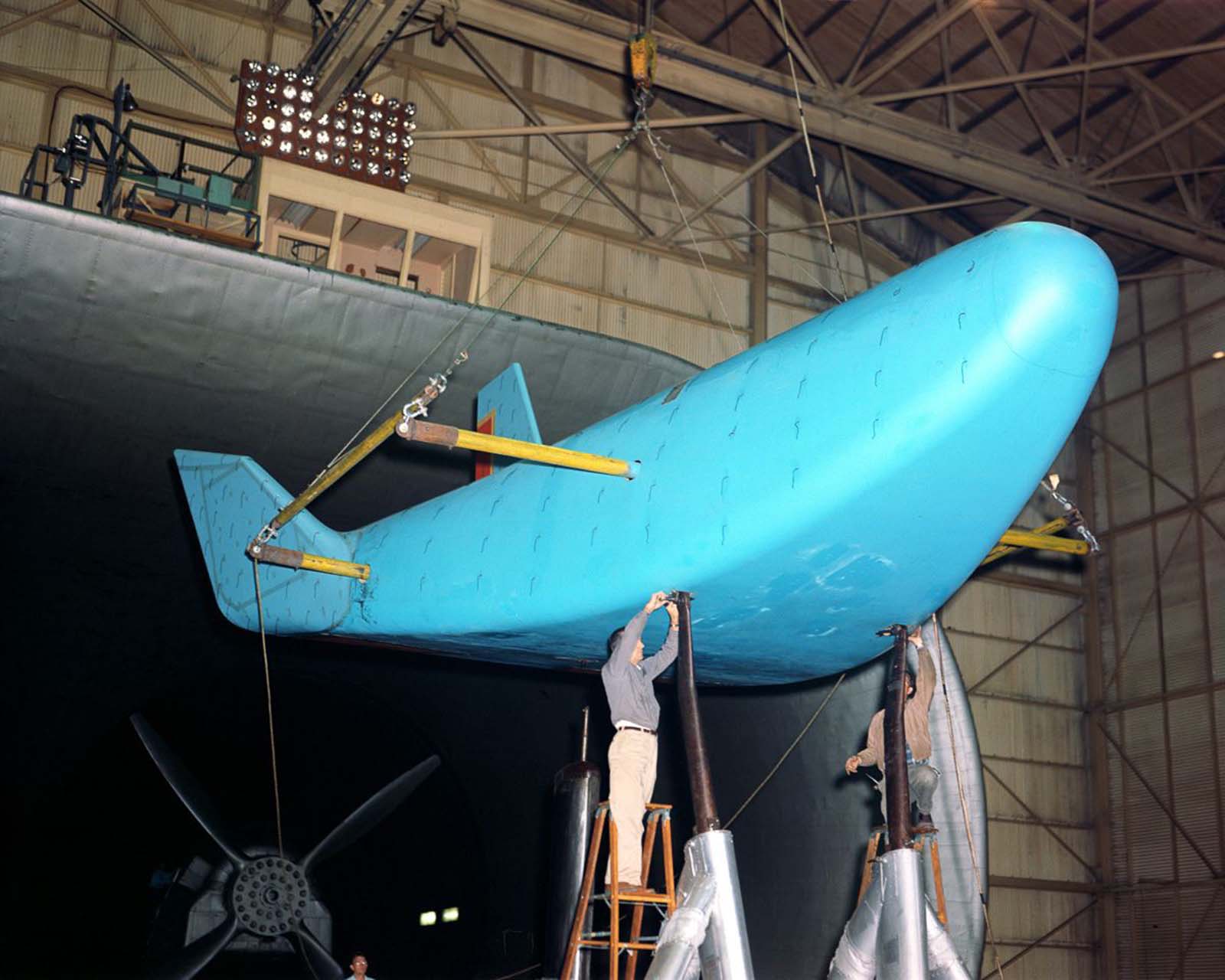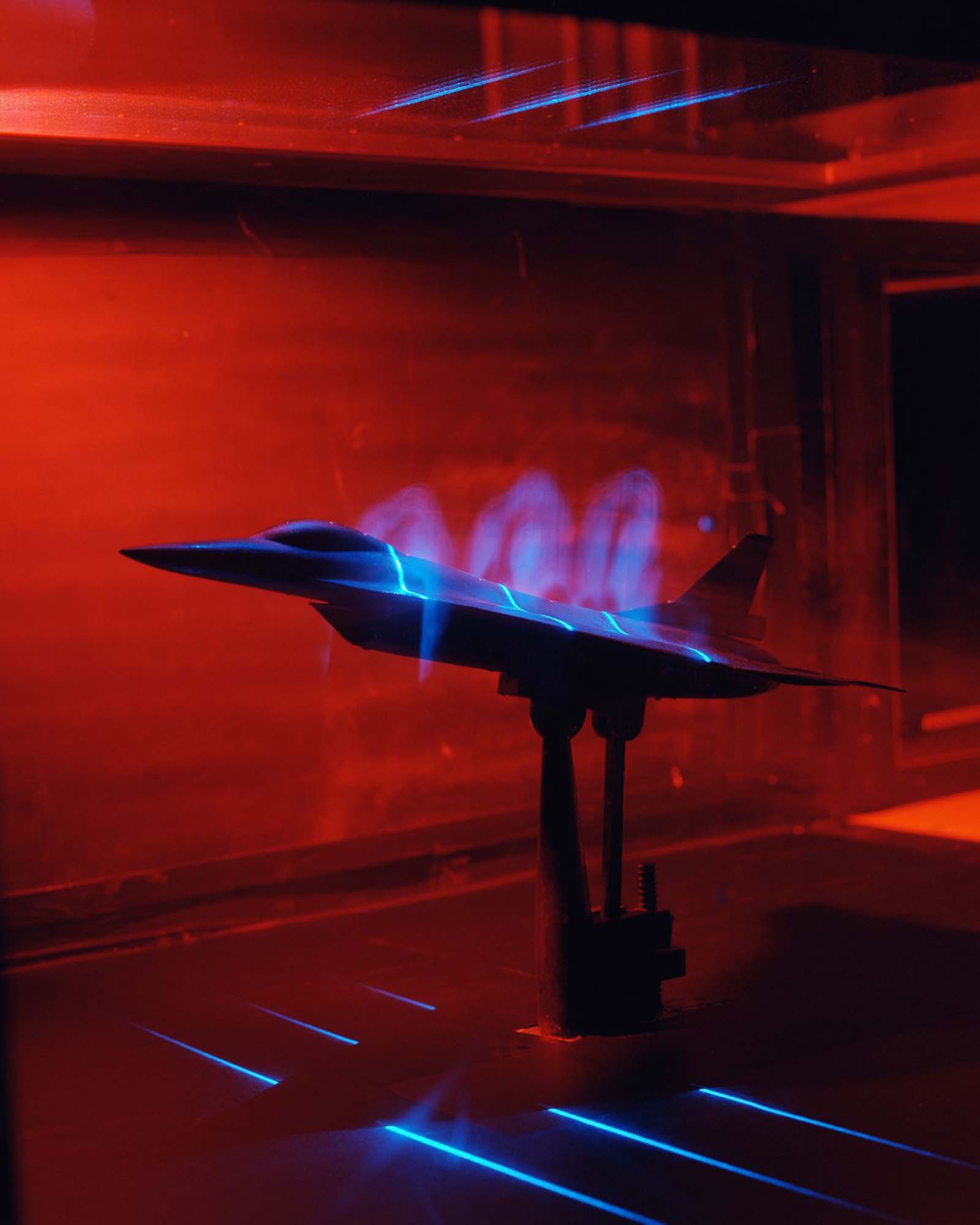NASA craft undergo thorough testing through the agency’s 42 major wind tunnels before they are cleared for launch once all parameters are met. A wind tunnel can be as small as a few inches wide or as large as a full-size aircraft. Large powerful fans often pull air through the tube. The object being tested is held stationary inside the tunnel until it is ready to be tested. It can be an aerodynamic test object, such as a cylinder or airfoil, an individual component, a small model of the vehicle, or a full-sized vehicle. If the stationary object were moving through the air, the air would move around it. Air can be studied in different ways; smoke or dye can be placed in the air and can be observed as it moves around an object.
During the early days of aeronautical research, when many were attempting to develop successful heavier-than-air flying machines, wind tunnels were first invented at the end of the 19th century. Originally, the wind tunnel was intended to be used to reverse the conventional paradigm of air standing still while an object flies through it: instead of the air standing still, the air would move past the object at speed, giving the same result. A stationary observer could then observe the flying object in action and measure the aerodynamic forces acting on it.
In 1916, the US Navy built one of the largest wind tunnels in the world at the Washington Navy Yard. Nearly 11 feet (3.4 m) was the diameter of the inlet and around 7 feet (2.1 m) was the diameter of the discharge. The paddle-type fan blades were driven by an electric motor with 500 horsepower.
The Langley Research Center in Virginia, built a 30-foot-by-60-foot wind tunnel in 1931 by the National Advisory Committee for Aeronautics (NACA). The tunnel was powered by a pair of electric motors rated at 4,000 horsepower. The layout was a closed-loop format with a double-return and could accommodate full-size real aircraft as well as scale models. Despite its designation as a National Historic Landmark in 1995, the tunnel was eventually closed, and demolition began in 2010.
During World War II, the United States built at Wright Field in Dayton, Ohio, one of the largest wind tunnels at that time. The wind tunnel begins at 45 feet (14 meters) in diameter and narrows to 20 feet (6.1 meters). Two 40-foot (12 m) fans were driven by a 40,000 hp electric motor. Models of large aircraft could be tested at speeds of 400 mph (640 km/h). Throughout World War II, the US had built eight new wind tunnels, including one that was the largest in the world at Moffett Field near Sunnyvale, California, designed for testing full-size aircraft at speeds of less than 250 mph, and a vertical tunnel at Wright Field, Ohio, where the wind flow is upward and the concept designs for the first primitive helicopters were tested there.
A few years later, specialized tunnels were developed that simulated subsonic, transonic, supersonic, and even hypersonic speeds, which is five times the speed of sound. The fiery heat of atmospheric re-entry can be simulated in some tunnels, and the buildup of ice on the upper atmosphere can be explored in others.


































